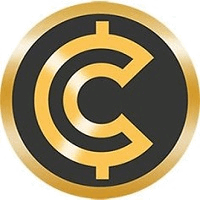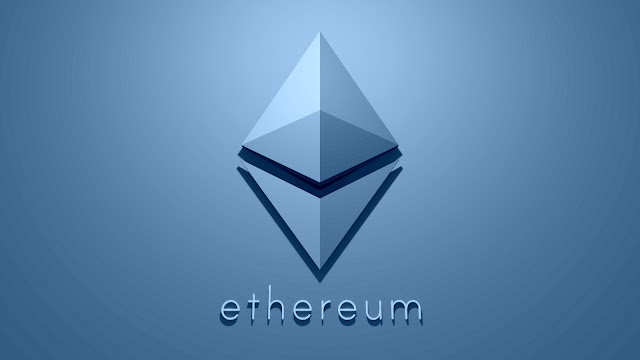Wednesday, November 16, 2022
Home
/
Crypto-currency-course- Multan
/
Crypto-currency-trading-in-Binance
/
crypto-mining-course-Multan
/
Blockchain Development with Ethereum and Forex Trading in Multan 2022
Blockchain Development with Ethereum and Forex Trading in Multan 2022
In this Article I am going to tell you about the Blockchain Development with Ethereum and Forex Trading in Multan 2022
so that you will come to know about how to invest on Cryptocurrency and which cryptocurrency is the best to invest on 2022. You will also come to know about the forex trading and blockchain development.
If anyone of you are interested to join our course then you can contact us.
For more information, please visit our institute, 1st floor Noor Plaza Opposite Women University Ghanta Ghar Road, Multan.
Now I am going to tell you about Blockchain Development with Ethereum and Forex Trading in Multan 2022.
Blockchain technology is an advanced database mechanism that enables the transparent exchange of information within corporate networks. A blockchain database stores data in blocks linked in a chain. The data is chronologically consistent as chains cannot be removed or changed without network approval. As a result, blockchain technology can be used to create immutable or immutable ledgers to track orders, payments, accounts, and other transactions. The system includes mechanisms to prevent fraudulent transaction entries and provide a consistent picture of those transactions.
Blockchain technology has the following key characteristics:
A decentralized blockchain network uses transparency to reduce the need for trust between participants. These networks also prevent participants from exercising authority or control over each other in a manner that impairs the functioning of the network.
Immutability means that something cannot be changed or changed. Once someone records a transaction on the common ledger, participants cannot tamper with it. If the transaction record contains an error, a new transaction must be added to undo the error, and both transactions will appear on the network.
A blockchain system establishes rules for participants to agree to record transactions. A new transaction can only be recorded if the majority of the network participants agree.
The underlying blockchain mechanism is complex, but the following steps provide a quick overview. Blockchain software can automate most of these steps.
Step 1 - Record a Transaction
A blockchain transaction records the movement of physical or digital assets from one party to another party on the blockchain network. This is recorded as a block of data and may contain information such as:
Who was involved in the transaction
What happened during the transaction?
When did the transaction take place?
Where did the transaction take place?
Why did the transaction occur?
How much of the assets were exchanged? Falcon?
Step 2 – Achieving Consensus
Most participants in a decentralized blockchain network must agree that a recorded transaction is valid. Negotiation rules vary by network type, but are usually set at the beginning of the network.
Step 3 - Linking Blocks
Once the participants reach consensus, the transaction is written to the blockchain in blocks corresponding to pages of the ledger. Along with the transaction, a cryptographic hash is also added to the new block. A hash acts as a chain that connects blocks together. Any intentional or unintentional change to the contents of a block will change the hash value, allowing detection of data tampering.
Blocks and chains are therefore securely linked and cannot be edited. Each additional block strengthens the verification of the previous block and strengthens the verification of the entire blockchain. It's like stacking wooden blocks to build a tower. You can only stack blocks on top of it, and removing blocks from the center of the tower will cause the entire tower to collapse.
Step 4 - Share the Ledger
The system distributes an up-to-date copy of the central ledger to all participants.
Public Blockchain Network
Public Blockchain is permission less and anyone can join. All members of the blockchain have equal rights to read, edit and verify the blockchain. People mostly use public blockchains to exchange and mine cryptocurrencies such as Bitcoin, Ethereum and Lite coin.
Private Blockchain Networks
Private blockchains, also known as managed blockchains, are managed by a single organization. Privileges determine who can be a member and what privileges they have within the network. Private blockchains are only partially decentralized due to limited access. Ripple, a corporate digital currency exchange network, is an example of a private blockchain.
Hybrid Blockchain Network
A hybrid blockchain combines elements of private and public networks. In addition to public systems, companies can also set up private, permission-based systems. In this way, we control access to certain data stored on the blockchain while exposing the rest of the data. They use smart contracts to allow public members to confirm that private transactions are completed. For example, a hybrid blockchain can allow public access to digital currencies while keeping bank-owned currencies private.
Consortium Blockchain Network
Consortium A group of organizations that manages the blockchain network. Pre-selected organizations share responsibility for maintaining the blockchain and determining data access rights. Consortium blockchain networks are often preferred in industries where many organizations share common goals and benefit from shared responsibility. For example, the Global Shipping Business Network Consortium is a non-profit blockchain consortium that aims to digitize the shipping industry and improve collaboration among shipping industry players.
Forex Trading:
The forex market is a global decentralized or over-the-counter market for trading currencies. This market determines the exchange rate for each currency. It covers all aspects of buying, selling and exchanging currencies at current or fixed prices.
Forex trading can be complicated and may not be for everyone. Whether or not forex is good for you depends on your financial situation, your goals, and how much investment experience you have as a beginner. Overall, especially since the majority of forex traders lose money.
Most forex trading is not intended to exchange currencies (like you would do at a currency exchange while traveling), but to speculate on future price movements, much like you would trade stocks. It is for Similar to stock traders, forex traders try to buy currencies that they believe will increase in value relative to other currencies or dispose of currencies that they believe they will lose purchasing power.
There are three different types of Forex trading catering to traders with different objectives.
Spot Market:
This is the primary forex market where these currency pairs are swapped and exchange rates are determined in real time based on supply and demand.
forward market:
Instead of executing a trade now, a forex trader can enter into a binding (private) contract with another trader to set an agreed currency exchange rate at a future date.
futures market:
This is done on an exchange rather than privately like the futures market.
The futures market and the futures market are primarily used by forex traders wishing to speculate or hedge against future price movements of a currency. The exchange rates for these markets are based on what happens in the spot market, which is the largest forex market and where most forex trading is performed.
crypto-mining-course-Multan
Tags
Crypto-currency-course- Multan,
Crypto-currency-trading-in-Binance,
crypto-mining-course-Multan

















